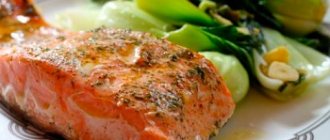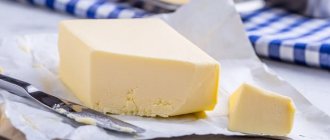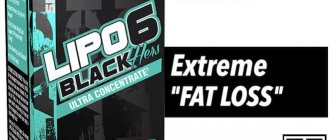Omega-9 acids are a group of monounsaturated triglycerides that are included in the structure of every cell of the human body. These fats are involved in the construction of neuronal myelin, regulate the exchange of essential compounds, and activate the synthesis of hormones, neurotransmitters and vitamin-like substances.
The main sources of monounsaturated fats are olive, almond and peanut oils, fish oil, nuts, and seeds.
Let's take a closer look at what omega-9 triglycerides are, where they are found, and their main functions.
General information
In the human body, omega-9 lipids perform energetic, plastic, anti-inflammatory, hypotensive and structural functions. These substances belong to the group of conditionally essential compounds, since they can be synthesized from unsaturated fats.
Content:
- General information
- Beneficial features
- Daily requirement
- Deficiency and excess
- Selecting and storing foods containing healthy fats
- Food sources
- Monounsaturated fats in cosmetology
- Application
- Conclusion
The main representatives of omega-9:
- Oleic (cis-9-octadecenoic) acid. Its content is closest to human reserve fat. Thanks to this, the body does not waste resources on restructuring the fatty acid composition of the lipid supplied with food. Oleic acid is involved in the construction of cell membranes. When replacing triglyceride with other monounsaturated compounds, a sharp deterioration in the permeability of biological membranes occurs. In addition, cis-9-octadecene lipids slow down the oxidation of stored fats and serve as a source of energy.
Oleic acid is obtained from vegetable oils (olive, peanut, sunflower) and animal fats (beef, pork, cod). Unlike omega-3 acids, omega-9 is subject to oxidation to a lesser extent, which serves as the basis for using the lipid for filling canned food and frying foods.
- Erucic acid. The leaders in terms of compound content are rapeseed, rapeseed, broccoli, mustard. Erucic acid is used mainly for industrial purposes, since the enzymatic system of mammals is not suitable for its processing. Thus, rapeseed oil is used in the leather, textile, soap, and paint and varnish industries. Oils that contain no more than 5% erucic acid of the total amount of fat per product are acceptable for oral administration.
Exceeding the safe daily norm can be harmful to health: slow down the onset of reproductive maturity, lead to changes in skeletal muscles, and disrupt the proper functioning of the heart and liver.
- Gondoic (eicosenoic) acid. Triglycerides are used in cosmetology practice to enhance regeneration and protect the dermis from ultraviolet rays, deeply moisturize, strengthen hair follicles, and maintain cell membranes.
Natural sources - organic oils: jojoba, camelina, mustard, rapeseed.
- Midic acid. These fats are the end products of metabolism in the human body.
- Elaidic acid. The compound is a trans isomer of oleic acid. Elaidin lipids are rarely found in the plant world. However, they are found in small quantities in cow and goat milk (0.1% of the total triglycerides).
- Nervonic (selacholic) acid. It is part of the sphingolipids of the brain, participates in the synthesis of myelin sheaths of neurons, and restores nerve fibers. The main representatives of nervonic acid are chinook salmon (Pacific salmon), yellow mustard fruits, flaxseeds, sockeye salmon (ray-finned salmon), sesame seeds, macadamia nuts. The compounds are used in medicine to eliminate disorders associated with demyelination of neuron membranes (multiple sclerosis, adrenoleukodystrophy) and to treat post-stroke complications (numbness of the limbs, hemiplegia, glossolalia).
Among monounsaturated fats, oleic acid is the most beneficial for the human body.
Sources of Beneficial Omega-9s
One of the main sources of omega-9 - as well as all other classes of unsaturated fatty acids - are a variety of nuts and seeds , as well as oils obtained from them by cold pressing (it is from these sources that omega-9 is most easily and fully absorbed) . By the way, acids “numbered” 9 are much more resistant to high temperatures, and therefore are less destroyed when heated. Of the nuts, the most oleic acid is in hazelnuts, macadamia, peanuts , and from seeds - in pumpkin and sunflower fruits, flaxseed .
Of the oils, the most oleic acid is found in:
- olive – up to 83%
- apricot kernels – up to 74%
- sesame – up to 42%
- sunflower – up to 39%
- pumpkin seeds – up to 47%
- corn – up to 42%
- cocoa butter – up to 36%
Another rich source of omega-9 is avocado .
, beef, pork and cod fats boast a high content of oleic acid .
Types of fish such as trout and salmon and nervonic acid, which is beneficial for the brain, is found in the meat of fish such as sockeye salmon and chinook salmon, which, however, are also salmon.
Poultry meat - turkey, duck and chicken - are also included in the list of foods containing omega-9.
Fish oil preparation contains a complex of all unsaturated fatty acids.
In order for all unsaturated acids to be balanced in the body, it is worth paying more attention to the consumption of fats, and not only vegetable ones, as it might seem at first glance, but also of animal origin. Moreover, not only the quantity, but also the quality of the products that contain omega-9 is important. So, vegetable oils should be unrefined and cold-pressed, fish should be fresh and not frozen, nuts should not be fried . It is advisable to store oils away from sunlight, preferably in dark glass. They are best used in cold dishes, especially salads, since vitamins from raw vegetables - especially A and E - bind better to omega-9 and enter the body.
https://www.list7i.ru/?mod=boards&id=1493
https://www.inmoment.ru/beauty/health-body/omega-9.html
Many people today interested in healthy eating, when asked whether fats are healthy or harmful, would rather choose the second answer - but fats are different. Today, fortunately, more and more people are beginning to understand this, and understand that fats play a vital role in our lives, in the literal sense - without fats, the formation of many vital substances in the body becomes impossible.
But what about the fact that saturated fats cause the development of atherosclerosis, coronary artery disease, stroke and heart attack? This happens if they are abused, and this is exactly what is happening in our diet today. Most people daily consume excessively animal fats, found in butter and full-fat sour cream, aged cheeses and fatty meats, and all these products are also mixed with each other.
Unsaturated fats act differently on the body - a source of unsaturated fatty acids, the benefits of which many have also heard today. These acids improve the structure of the walls of blood vessels, support the functioning of the immune system, prevent cholesterol from accumulating in the body, participate in the synthesis of necessary hormones and perform many other “actions” that provide us with beauty and health for many years. Without unsaturated fatty acids, normal metabolism is impossible, and cell membranes simply cannot form without them - a person will remain a “vegetable”, incapable of a normal life.
Beneficial features
Without omega-9 fats, the full functioning of the immune, cardiovascular, endocrine, nervous and digestive systems is impossible.
Why is it useful to use them?
- Stabilizes blood glucose levels, reducing the risk of developing diabetes.
- They stop the growth of cholesterol deposits in blood vessels, preventing the occurrence of thrombosis, atherosclerosis, heart attack, and stroke.
- Increase immune defense.
- Supports skin barrier function.
- Slow down the division of malignant cells (together with omega-3).
- Regulate lipid, carbohydrate and protein metabolism.
- Activate the synthesis of vitamins, neurotransmitters and hormone-like compounds.
- Increases the permeability of cell membranes for the entry of substances.
- Protect the mucous membranes of organs from destruction.
- Retains moisture in the epidermis.
- Participate in the construction of the myelin sheaths of neurons.
- Reduce nervous excitability, prevent the development of depression.
- Increases the elasticity of blood vessels.
- They supply the body with energy (due to the breakdown of lipid structures).
- Maintain muscle tone and regulate muscle function.
Given the wide range of beneficial properties, omega-9 triglycerides are used for the treatment and prevention of anorexia, diabetes, osteoporosis, atherosclerosis, constipation, ophthalmological pathologies, acne, eczema, arthritis, arthrosis, malignant neoplasms, depression, premenstrual syndrome, tuberculosis, strokes, heart attacks, obesity, ulcers of various etiologies, consequences of alcoholism.
How to take omega-3? Omega-3 dosages for adults
Omega-3 supplements are best taken in the morning immediately after a meal. It is advisable to have breakfast with healthy fats (avocado, butter, nuts) to improve absorption. Omega-3 intake can be combined with any other supplements and vitamins, including vitamin D3.
For prevention, the Russian Ministry of Health recommends taking 1 gram (1000 mg) of omega-3 acids per day (maximum 3 g). Please note that we are not talking about 1 g of fish oil, but about omega-3 acids. Always look at the composition of the drug. The daily value is ~1000 mg DHA + EPA. They can be contained in either 1 gram of fish oil or 5 grams.
Daily requirement
The body's need for omega-9 varies between 13-20% of the total caloric intake of the daily diet. Depending on age, health status and place of residence, this indicator may vary.
The daily intake of omega-9 is increased in the following cases:
- if there are inflammatory processes in the body (regardless of location);
- in the treatment of chronic vascular and heart diseases (by stopping the growth of cholesterol deposits);
- during physical activity (intense sports, hard work).
The need for omega-9 fats decreases when:
- consuming large portions of essential lipids omega-3 and omega-6 (since oleic acid can be synthesized from these substances);
- pregnancy;
- breastfeeding;
- pancreatic dysfunction.
Omega 3 6 9, what to use?
The benefits of polyunsaturated acids are great, but you should use moderation in everything. Experts recommend taking these fats in doses, in certain proportions. The human diet often does not compensate for the Omega deficiency, so it is necessary to look for other sources of these compounds. A good solution is biologically active nutritional supplements (BADS). They contain acids in ratios that are well absorbed by the body. In addition, the supplements are available in a convenient form (capsules), so there is no unpleasant smell or taste of fish when taken.
Before you choose and start taking medications, let’s learn a few simple rules. Let's take a closer look at how to properly take omega-3-6-9.
- Dietary supplements are best taken with food.
- Each capsule should be taken with plenty of water (at least a glass).
- Do not use juice, milk or other drinks (clean water only).
- Follow the recommendations specified in the instructions or the diagram from your doctor. It is unacceptable to exceed the dosage. A smaller amount will have minimal benefit.
- Set a reminder so you don't miss a single appointment.
- Use dietary supplements separately from each other.
- It is best to take the drug in a course: 2 months, then a break and repeat.
The dietary supplement is indicated for both adult women and men, as well as for children. The benefits of Omega 3-6-9 are especially great for older people.
Important! The method of application depends on the percentage of active ingredients.
Deficiency and excess
Considering that omega-9 is partially synthesized in the body, a deficiency of these compounds is a rare occurrence. The most common causes of fatty acid deficiency are prolonged fasting and adherence to “lipid-free” weight loss programs.
Consequences of omega-9 deficiency:
- weakened immunity, and as a result, predisposition to bacterial and viral infections;
- the occurrence of arthritis, arthrosis, joint pathologies;
- deterioration of the digestive tract (prolonged constipation, bloating, flatulence);
- decreased concentration;
- depressed mood, emotional instability;
- exacerbation of chronic diseases of the musculoskeletal system;
- weakness, fatigue;
- deterioration in the appearance of hair (intensive hair loss, loss of shine, fragility);
- increased blood pressure;
- excessive dryness of the skin and mucous membranes;
- constant feeling of thirst;
- the occurrence of cracks in the mucous membranes of organs;
- changes in the internal microflora of the vagina;
- reproductive dysfunction.
If the deficiency of monounsaturated fats is not corrected for a long time, angina pectoris may develop.
An excess of oleic acid is just as unsafe for health as a deficiency. Signs of an omega-9 overdose:
- weight gain (as a consequence of lipid metabolism disorders);
- exacerbation of pancreatic pathologies (impaired enzyme synthesis, metabolic syndrome);
- blood thickening, which leads to heart attack, stroke, thrombosis;
- liver disease (cirrhosis, hepatosis).
In addition, an excess of conditionally essential fats, especially erucic acid, negatively affects a woman’s reproductive function: difficulties arise with conception, the correct ontogenesis of the fetus is disrupted (during pregnancy), and lactation is difficult (during breastfeeding).
To eliminate the consequences of a deficiency or excess of fat, diet adjustments are made. If necessary, the daily menu is enriched with pharmacological agents containing oleic acid.
Selecting and storing foods containing healthy fats
Despite the fact that monounsaturated omega acids are chemically resistant to oxidation, it is important to follow some rules to maintain their beneficial properties.
Adviсe:
- When choosing vegetable oils, give preference to products packaged in dark glass containers.
- Store omega-9 products in a cool place, away from direct sunlight.
- The maximum amount of beneficial lipids is present in unrefined, first-pressed oils (“extra virgin”).
- To preserve fatty acids, do not expose “omega-containing” foods to prolonged exposure to high temperatures. Cook food over low heat.
- The shelf life of vegetable oils is 6 months from the date of opening.
Remember, high-quality olive oil crystallizes at temperatures below 7 degrees.
Benefits of Omega-9
Although omega-9 can be synthesized from other fatty acids, their functions are no less important. For example, it is widely known that unsaturated fatty acids can protect against diabetes , but not everyone knows that omega-9 directly affects this protective function. So, some people have insulin resistance, which causes their sugar levels to increase. Experts believe that omega-9 eliminates this resistance, which prevents the onset of diabetes. Acids optimize glucose levels and also increase the body's ability to defend against and resist infections.
What other functions does omega-9 perform in the body:
- reduce the likelihood of developing cholesterol plaques ;
- improve the protective function of the skin by retaining a large amount of moisture in the epidermal cells;
- strengthen the immune system;
- regulate metabolic processes, the breakdown of all nutrients, the synthesis of new substances;
- increase the body's energy reserves, improve muscle function ;
- help increase the elasticity of the walls of blood vessels ;
- perform a protective function regarding mucous membranes;
- help essential substances penetrate cells;
- reduce the excitability of the nervous system, reducing anxiety and preventing depression;
- improve the function of the central nervous system , as they participate in the formation of myelin of neurons, and also contribute to a closer interaction of beneficial substances (vitamins and hormones) with neurotransmitters.
In medicine, drugs containing omega-9 are prescribed for osteoporosis, diseases of the cardiovascular system and vision organs, joint problems and nervous disorders, including anorexia.
Food sources
The leaders in the content of omega-9 triglycerides are unrefined vegetable oils.
Table "Food Sources of Monounsaturated Fats"
| Product name | Amount of lipids per 100 grams of product, grams |
| Olive oil | 82 |
| Mustard seeds (yellow) | 80 |
| Fish fat | 73 |
| Flaxseed (unprocessed) | 64 |
| Peanut butter | 60 |
| Mustard oil | 54 |
| Rapeseed oil | 52 |
| Lard | 43 |
| Fish of the northern seas (salmon) | 35 – 50 |
| Butter (homemade) | 40 |
| Sesame seed | 35 |
| Cottonseed oil | 34 |
| Sunflower oil | 30 |
| Macadamia nuts | 18 |
| Walnuts | 16 |
| Salmon | 15 |
| Linseed oil | 14 |
| Hemp oil | 12 |
| Avocado | 10 |
| Chicken meat | 4,5 |
| Soya beans | 4 |
| Trout | 3,5 |
| Turkey meat | 2,5 |
In addition, omega-9 acids are present in almost all nuts and seeds.
Ratio of Omega-3 to Omega-6 in foods
Omega-6s provide the greatest benefit when combined with Omega-3s. Moreover, much less acids of the first type should be supplied with food than the second. Due to poor nutrition, this rule is often violated. It is necessary to restore the balance to avoid the negative consequences of excess or deficiency of these substances in the body. When there are too few Omega-3 acids, the body completely switches to Omega-6, which may result in a feeling of drowsiness and lethargy.
There are several points of view on what the number of these elements should be. Most scientists believe that the ideal ratio of Omega-6 and Omega-3 is 2:1 or 4:1, respectively. You can achieve it by changing your diet. In this case, the content of polyunsaturated fatty acids in various products should be taken into account.
| Product | Omega-3 content, mg | Omega-6 content, mg |
| Flaxseed oil (1 tbsp.) | 7196 | 1715 |
| Sunflower oil (1 tbsp.) | 5 | 3905 |
| Sesame oil (1 tbsp.) | 40.5 | 5576 |
| Corn oil (1 tbsp) | 157 | 7224 |
| Canola oil (1 tbsp) | 1031 | 2532 |
| Olive oil (1 tbsp.) | 103 | 1318 |
| Chia seeds (30 g) | 4915 | 1620 |
| Flax seeds (30 g) | 6388 | 1655 |
| Sunflower seeds (1 cup) | 34 | 10602 |
| Sesame seeds (1 cup) | 541 | 30776 |
| Pumpkin seeds (1 cup) | 250 | 28571 |
| Walnuts (1 cup) | 10623 | 44567 |
| Almonds (1 cup) | 5.7 | 11462 |
| Pecans (1 cup) | 1075 | 22487 |
| Wheat (1 cup) | 52 | 1152 |
| Rye (1 cup) | 265 | 1619 |
| Oats (1 cup) | 173 | 3781 |
| Lentils (1 cup) | 209 | 776 |
| Beans, raw (1 cup) | 39.6 | 25.3 |
| Chickpeas, raw (1 cup) | 202 | 5186 |
| Green peas, raw (1 cup) | 50.8 | 220 |
| Green beans, raw (1 cup) | 12.7 | 73.5 |
| Lettuce, fresh (1 bunch, 360 g) | 209 | 86.4 |
| Spinach, fresh (1 bunch, 340 g) | 469 | 88.4 |
| Dandelion greens, fresh (100 g) | 44 | 261 |
| Rucola, fresh (100 g) | 170 | 130 |
| Apple, raw (1 pc.) | 16.4 | 78.3 |
| Banana, raw (1 piece) | 31.9 | 54.3 |
| Strawberries, fresh (100 g) | 65 | 90 |
| Carrots, raw (100 g) | 2 | 115 |
Monounsaturated fats in cosmetology
Omega-9 lipids, particularly oleic acid, are the most important structural components of the skin. Under the influence of these fats, it acquires elasticity, the number of fine wrinkles is reduced, and its antioxidant and barrier properties increase.
Manufacturers include oleic acid in lipsticks, care products for problematic and aging skin, hair perms, hydrophilic oils, healing emulsions, nail cuticle creams, and mild soaps.
Properties of Omega-9 Triglycerides:
- accelerate skin regeneration;
- potentiate the production of your own collagen;
- increase skin turgor;
- level the microrelief;
- eliminate itching, irritation, redness;
- accelerate metabolic processes;
- retain moisture;
- strengthen the walls of blood vessels;
- restore the protective mantle;
- ensure the resistance of deposited fats to oxidation (with a small amount of antioxidants);
- liquefy sebaceous plugs, including black comedones;
- strengthen local immunity;
- normalize lipid metabolism in the skin.
In addition, fatty acids accelerate the penetration of beneficial substances contained in the oil into the deep layers of the dermis.
Omega-9 cosmetics:
- Lip balm (Doliva). The hygiene stick consists of natural oils (olive, castor, mint) and vitamin E. Doliva balm is used to soften dry, chapped and flaky lip skin.
- Organic hair mask with omega-9 (Rahua). The healing concentrate contains vegetable oils (sunflower, ungurahua, shea, rapeseed, eucalyptus, lavender), quinoa, glycine. With regular use, the mask restores dull, damaged hair, strengthens hair follicles, and normalizes the water-lipid balance of the scalp.
- Face mask with olive oil “Heavenly Delight” (Avon, Planet SPA). The product is used to refresh, moisturize and tone delicate facial skin. The active components of the mask are olive oil, sunflower oil, vitamin E, beta-carotene, olive leaf extract.
- Restoring lipid cream (Locobase Ripea). The composition is intended for the care of weakened, dry and atopic facial skin. The drug contains oleic and palmitic acids, ceramides, cholesterol (fatty alcohol), glycerin, liquid paraffin.
- Body Lotion with Olive Oil and Vitamin E (Palmer's). Lipid emulsion cares for dehydrated skin, eliminates itching, dryness and flaking. Olive concentrate is ideal for lubricating heels, elbows and knees.
- Night revitalizing cream (Mirra). Multifunctional organic facial skin care product during night rest. The drug activates the natural mechanisms of regeneration of the dermis, evens out structural unevenness of the skin, and stimulates the synthesis of its own collagen.
Night cream contains fatty alcohols, lecithin, vegetable oils (olive, sesame, cocoa), polysaccharides from flax seeds, amino acid complex (glutamic acid, glycine, serine, alanine, lysine, threonine, proline, arginine, betaine), linden extract, D -panthenol, vitamins F, , E, mineral essence (zinc, sodium, iron, calcium lactates, magnesium and potassium chlorides, colloidal sulfur, copper chlorophyll derivatives, potassium hydrogen phosphate).
- Cleansing foam (Doliva). Cleansing mousse based on vegetable oils: olive, jojoba, castor. The foam is suitable for dry, atopic and sensitive skin. The product moisturizes, soothes and vitaminizes the stratum corneum of the dermis.
In addition, omega-9 triglycerides are used to create sunscreens with an SPF factor. If you don’t have such a product at hand, pure olive oil is suitable to neutralize harmful UV radiation. To do this, apply it to a clean body 15 – 20 minutes before sunbathing.
Question 6: What fatty acids are in Omega-3 and what do they do?
Now there will be several tricky names, but without this there is no way to understand what to look for in the instructions for Omega-3.
There are three main Omega-3 fatty acids:
1. Alpha-linolenic acid (ALA).
2. Eicosapentaenoic acid (EPA).
3. Docosahexaenoic acid (DHA).
The last two can be formed from the first, although in very small quantities.
ALA is found mainly in plant foods: flaxseed oil, nuts, cabbage, green and leafy vegetables, etc. It is used mainly as a source of energy.
The other two are more interesting: eicosapentaenoic acid and docosahexaenoic acid. These are the ones indicated in the instructions by manufacturers of dietary supplements and preparations containing Omega-3 fatty acids. They are found in herring, salmon, mackerel, sardines, tuna, trout, DHA - also in sea mollusks and microscopic algae.
Both improve blood fluidity, reduce the synthesis of inflammatory mediators, reduce “bad” cholesterol, slow the progression of Alzheimer’s disease, senile dementia, and improve the condition of the heart and blood vessels.
DHA is the main structural component of the cerebral cortex. Responsible for the ability to create new neural connections, for memory, attention, creativity, emotions. Prevents age-related changes in the organ of vision, improves the lipid layer of the tear film, therefore Omega-3 is recommended, including for dry eye syndrome.
Application
On an industrial scale, oleic acid is obtained by hydrolysis of vegetable oils. To do this, fractionation of lipids from olive concentrate is performed, followed by repeated crystallization from methanol or acetone. The resulting emulsion (olein) has a paste or liquid texture that hardens at temperatures above 10 degrees Celsius.
Areas of application of oleic acid:
- Paint and varnish industry. Olein is used as a basis for the production of paints, drying oils, enamels, flotation reagents, and emulsifiers.
- Household chemicals. Salts and esters of oleic acid are auxiliary components of detergents and soap emulsions.
- Food industry. Technical fats are used as defoamers (when thickening products in vacuum units), emulsifiers, and filler carriers (when glazing fresh fruits).
- Pulp and paper industry. Monounsaturated lipids are added to cellulosic mixtures to increase their fluidity and elasticity.
- Metallurgy. Technical acid is used as a cutting fluid when machining high-alloy and stainless steels by cutting. In addition, olein is used for finishing steel surfaces of parts with metal removal up to 22 microns.
- Textile industry. Omega-9 ethyl oleates are included in finishing preparations that give clothes water-repellent, fire-retardant, oil-repellent, and hydrophobic properties.
- Medicine. Technical olein is introduced into pharmaceutical preparations as a filler, emulsifier, and solvent for vitamins and hormones.
In addition, oleic acid components are used in the perfume, chemical, rubber and petrochemical industries.
Food selection and storage
Omega acids demonstrate high resistance to oxidation. However, products containing them require special storage rules.
Recommendations:
- It is advisable to purchase vegetable oils in dark glass containers;
- food products must be stored in cool, protected from sunlight places;
- purchase unrefined oils labeled “extravirgin”. They contain the maximum concentration of lipids;
- food from healthy products should be cooked over low heat, strong overheating is unacceptable;
- Unrefined oils cannot be stored for longer than six months after opening the package;
- It is not advisable to cool olive oil to a temperature below 7°C. After passing this threshold it crystallizes.
© Baranivska — stock.adobe.com











